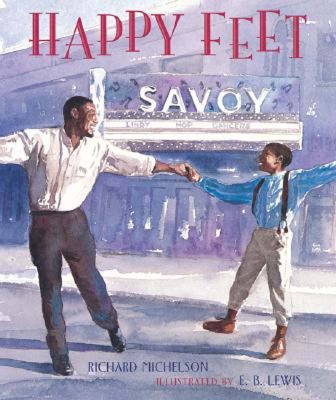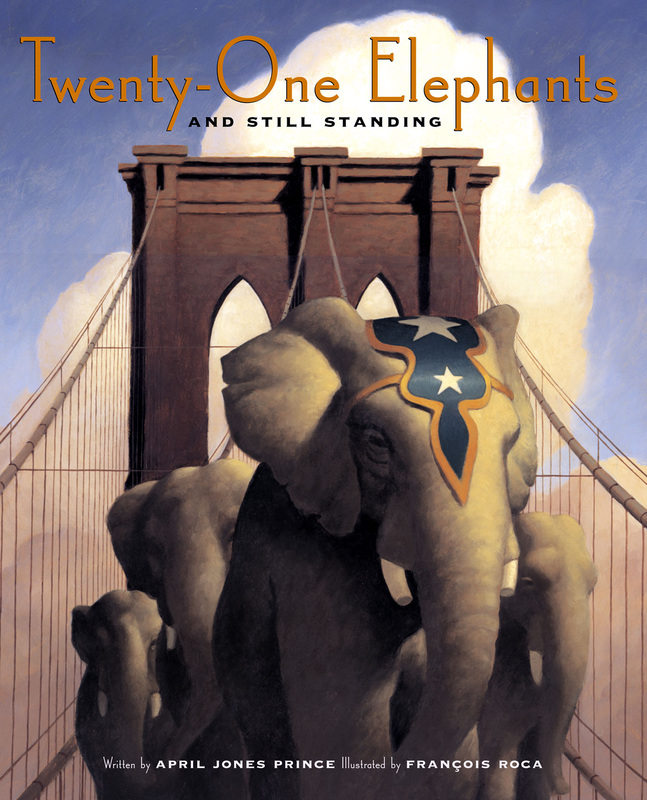
It was an “extra special” day, says the boys father. “Mama says any day I was born would be special, but Daddy says the twelfth of March 1926 was extra special. It was the day the doors swung open on the earth’s hottest, coolest, most magnificent superdeluxe dancing palace, the Savoy.” It’s a story that celebrates dancing, set in a glorious moment in New York’s past. And though it has a subtitle – “The Savoy Ballroom Lindy Hoppers and Me” – its title describes the mood perfectly: Happy Feet.
A little boy watches his father in a shoeshine shop up the street. “My toes are tappin’ and my knees are swingin’,” the story begins, and because he was born on the day the Savoy opened, “My daddy calls me Happy Feet.” The boy waves to Stretch and Shorty as they head to the club, and the book has a real sense of place. “All the hep cats come to Pop’s.”
It’s the human touches that keep the story warm. The boy is proud of his father, who “banged nails” and “mopped floors” to build the shop near the club. The father wears a cautious face when he sets a sign on the sidewalk promising the finest shoeshine in Harlem. “Ask your daddy about the night he outdanced Twistmouth George,” teases a customer named Long-Legged George. And it’s the shoe-shining father who will fondly re-tell the legend.
It’s a fun memory that’s been lovingly preserved. “‘There were ballrooms before,’ my daddy says, ‘but none like the Savoy.'” At the club, Big Bea sparks a dance “so new it didn’t even have a name yet.” The story also holds a moving message, but it’s tucked subtly into the background. “When folks are swinging, and nobody better than nobody,” sings one of the club’s singers. “Salt and pepper – equal! Cats and chicks – equals! Everybody just coming to dance.”
E. B. Lewis is my favorite children’s illustrator, and his watercolors bring the story to life. “I like the strong human interest stories,” he writes on his web site. “The kind that evoke emotion… Stories that touch the heart.” The book’s jacket adds that the story’s author, Richard Michelson, “once won a disco dance derby in college…with a little help from his white polyester suit.” But it’s Lewis who seems to have a secret affection for the story’s characters, dedicating his illustrations “to Mr. Fuller at Fuller Shoeshine,” and adding simply: “Thanks for everything.”
After the father dances at the club, he somehow he senses his wife crying, giving birth to their son. And it’s on the last page of the book that Michelson makes a gentle connection between the joy of dancing and life itself.
“When you were born,” the father says, “I held you – so new you didn’t even have a name yet – high towards the heavens so you could shine.”
